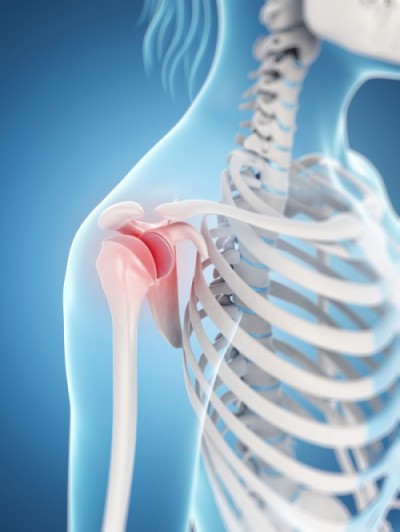

Navigating A Frozen Shoulder
March 26, 2014
What is a Frozen Shoulder?
What is commonly called “frozen shoulder” is a medical condition also referred to as adhesive capsulitis. As the name suggests, over time the shoulder becomes increasingly stiff and difficult to move, sometimes to the point of great loss of flexibility and mobility. The ball joint of the upper arm fits into a socket in the shoulder blade, is held in place by muscles, tendons, and the shoulder capsule, which is a thick band of tissue that also permits the shoulder to move freely. When the shoulder capsule becomes damaged or inflamed, it can cause the shoulder to stiffen and “freeze”, resulting in frozen shoulder.
What Are The Major Symptoms of A Frozen Shoulder?
Stiffness, a loss of range of motion, and pain while moving are all major symptoms of frozen shoulder. The pain is usually a dull ache located on the outside of the shoulder and may possibly involve the upper arm. The stiffness and inability to move the shoulder are major indicators of a frozen shoulder.
There are three main stages of frozen shoulder, each with slightly different symptoms:
| Stage | Symptoms | Approximate Duration |
|---|---|---|
| “Freezing” | Gradually worsening pain and decreasing range of motion | Six – nine months |
| “Frozen” | Stiffness plateaus, pain lessens | Six months |
| “Thawing” | Pain can be exacerbated as the range of motion gradually improves | Six months to up to two years |
What Causes Frozen Shoulder?
Frozen shoulder happens because the shoulder capsule becomes inflamed, gradually becomes stiffer as adhesions form. Additionally, a special kind of lubricant that the body produces, called synovial fluid, that usually keeps the shoulder joint moving smoothly, is reduced in the joints of those suffering from frozen shoulder.
When it comes to direct causes for frozen shoulder, there are no clear connections between certain activities and movements and the occurrence of the condition. Certain diseases, such as diabetes, cardiac disease, and thyroid issues, increase the risk of frozen shoulder occurring. The condition will sometimes crop up if a patient has recently suffered an injury, like a fracture, that causes their shoulder to be immobile for a long period of time.
What Are The Treatment Options?
Despite the limitation of shoulder mobility, this condition responds extremely well to a relatively non-invasive form of treatment. Over-the-counter anti-inflammatory drugs help greatly to reduce swelling and pain, and occasionally cortisone shots may be delivered to the shoulder joint to loosen it initially. The best course of treatment is regular stretching and exercise therapy, which will gradually return strength and the full range of motion to the shoulder. Regular stretches that incorporate passive stretch exercises, flexion, and other movements tend to have extremely good results. Our SimpleTherapy exercise program is an excellent resource for those suffering from frozen shoulders.
Your Journey to Pain Relief
App tracks progress. Step by step guide to pain relief and prevention.
Show resultsFree Newsletter
Stay in the know. Our blogs are written by orthopaedic surgeons.
